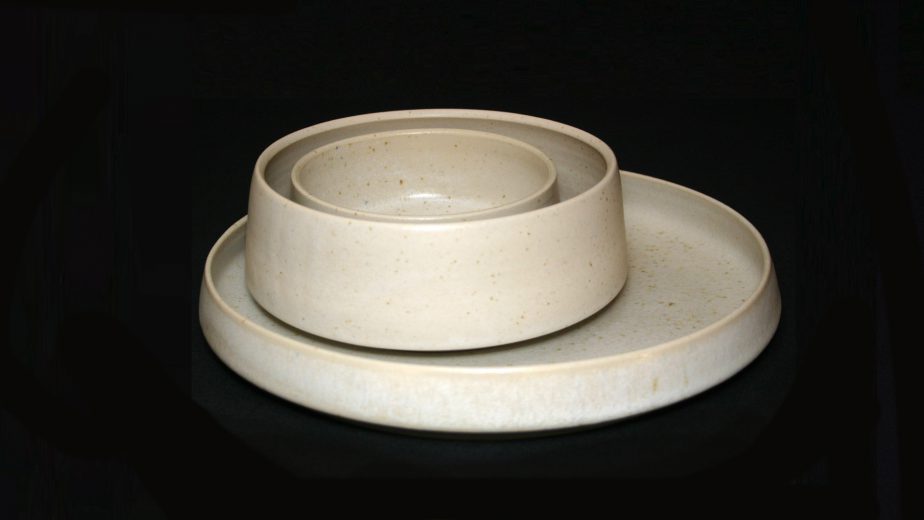Urban Stoneware
“I wanted to bring a more contemporary feel to my more traditional bowls and plates but still retain a feel of the early less refined clays. I wanted the glazed surfaces to somehow retain the coastal feel of Fremantle. I looked for the feel of beach sand, blue sky and limestone – not too shiny.”
Stewart Scambler’s new Urban Stoneware collection brings a sleek new shape to tableware.
Created out of his Palmyra based studio and woodfired just outside of York in the Perth Hills, the designs stand out for their unique inward sloping sides.
“I was aware that several potters were using a shape that was cylindrical as a response to moving away from more traditional bowls based around sections of a sphere. The straight sided forms did not appeal to me and a solution seemed impossible until whilst visiting a friend in Denmark I became aware of the base of the Karri on his property, slightly inward sloping-a short section of a tall cone. The solution was obvious,” Stewart says.
“This shape enabled me to address my other criteria. The bowl forms needed to nest inside each other, they needed to stack and also retain maximum volume without wasting space. The shape easily translated between trays, plates and various bowl sizes as well as flower jars, jugs and mug forms.”
The collection includes plates, bowls and cups. All of which are glazed and fired in his studio near Fremantle. The pieces are thrown as families.
Some pieces are woodfired. The woodfired work is distinctly all Western Australian with the clays dug and blended locally, and the timber sourced from the studio’s property (grown from seed).
“I spend some time adding “impurities “to what I feel are over refined commercial clay bodies —hopefully imbuing a sense of naturalness,” Stewart says.
Stewart and Trish Scambler have been working as potters in Western Australia since 1992.
Their studio near Fremantle uses only natural, and as much as possible, recycled materials and a major portion of its power is provided from solar panels, whilst the remainder is sourced as green power.
The wood used in the kiln is replaced by planting in excess of 100 trees each year.

